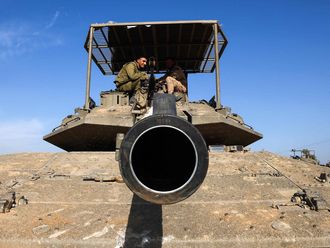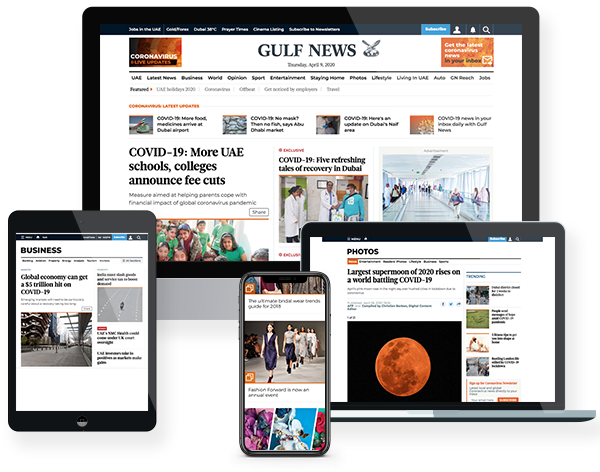
More than 4000 Palestinian women in Gaza, along with 5000 children, have tragically lost their lives, with the total number of casualties exceeding 15,000.
Additionally, countless others have been wounded, buildings have been demolished, and millions have been left to grapple with starvation and displacement. The harrowing photos coming out of Gaza are disturbing and evoke universal condemnation.
Without diminishing the sacrifices of Gazans and without ignoring the complexities of the situation, it’s crucial to acknowledge that while a battle has ended, the war is far from over. This demands a candid assessment of the situation.
Hamas spokespersons have consistently expressed gratitude to Iran (for providing financial support and weaponry) and to Hezbollah in Lebanon (for their role in shaping the rules of engagement). Additionally, they have drawn support from the Houthis in Yemen and various armed groups in Iraq.
Financial and military support
Meanwhile, other actors in the West Bank, as well as those in Egypt, Saudi Arabia, the Gulf states, Turkey, and across the broader Arab and Muslim world, have been also playing roles that often go unacknowledged. Arab and Muslim foreign ministers, including those from Saudi Arabia, Jordan, and Egypt, have embarked on diplomatic tours to world capitals to address this critical issue.
Hamas spokespersons have the right to express their gratitude selectively, emphasising their alignment with the ‘axis of resistance’. They view the conflict as primarily their own, though the implications of such conflicts are far-reaching.
In this round of conflict, it is plausible to say that Iran applied a timeless strategy, articulated in the 7th century BC by the Chinese philosopher Sun Tzu in his renowned work, “The Art of War”. He stated that “the highest art of war is to subdue the enemy without confronting him.” Iran successfully employed this approach in some of its conflicts with the “Great Satan.”
Iran provided financial and military support, as echoed by multiple Hamas spokespersons. However, and at a very crucial moment, Iran distanced itself from Oct. 7 operation. Initially, this was done through its proxy in Beirut, Hezbollah, and later through diplomatic channels both domestically and internationally.
Talk to me; I hold the key
Iran has also engaged in significant diplomatic efforts in various capitals, worldwide, emphasising that it had halted activities that had been concerning in recent years, particularly regarding “normalisation with Israel.”
When we assess the gains and losses thus far, it becomes evident that Iran has an upper hand in the Gaza conflict. Tehran recognises the sensitivity and heightened emotions surrounding Palestinian cause among Arabs as a whole. The Oct. 7 incident has been a powerful trigger, igniting intense emotions within that audience.
Iran maintains that it bears no responsibility for the incidents that transpired, a stance it has the right to assert. Simultaneously, it encourages its proxies in Beirut, Sana’a, and Iraq to engage in skirmishes on the fringes of the battle.
This sends a clear message to those seeking clarity: “Talk to me; I hold the key.” This outcome is discernible even to newcomers in political and diplomatic affairs, not to mention the highest echelons of leadership in Washington, London, Berlin, and Paris.
The reality is that Tehran has possessed the capability and knowledge to develop weapons for many years, and both Iran and Hamas understand how to smuggle these weapons into Gaza. Yet, the weapons provided are considered to have limited effectiveness.
For instance, Iran has refrained from supplying Hamas with anti-aircraft missiles or drones, despite having a significant inventory, including a type known as ‘Gaza.’ These weapons have been supplied to the Houthis in Yemen and Hezbollah in Lebanon.
So, why this restraint in Gaza? The answer lies in the fact that what is required is a strategic movement rather than direct confrontation, which means pursuing goals different from what some individuals within Hamas, particularly the militants, perceive as ‘liberation.’
Forces of arrogance
The Iranian domestic front has been galvanised in response to the perceived threat from “forces of arrogance”, fuelled by a significant propaganda push from the Iranian regime. When “Al Aqsa Flood” operation erupted, it was only natural for Iranian forces within the country to rally for victory, not only in cities like Qom and Tehran but across all of Iran.
Although everyone seemed to be waiting for the “declaration of jihad from the leader”, this declaration surprisingly came quietly from Sana’a, not from Tehran, and it did not lead to any significant mass demonstrations in support of “Al Aqsa Flood” in Tehran.
Nevertheless, the Iranian economy felt the ripple effects of these developments, with a noticeable drop in the value of the Iranian currency and fluctuations in foreign currency prices in the domestic market. Consequently, the government announced an increase in defence allocations in response to the situation.
Earlier in mid-October, Mohammed Shia Al Sudani, Prime Minister of Iraq, delivered an American warning to the Iranian side, which has resulted in clear effects, followed by direct accusation of “dissociation.”
In fact, the entire operation was part of an effort to “mitigate embarrassment” and bolster the credibility of Tehran’s ongoing narrative of their declared hostility towards “death to America and death to Israel.”
The exploitation of the Palestinian cause has been and continues to be a hallmark of extremism, manipulating the sentiments of the Arab world, which genuinely sympathises with the suffering and plight of the Palestinians.
However, the situation took a different turn with the so-called epic operation, involving the landing of armed individuals from a helicopter onto a ship in Bab Al Mandab, accompanied by threats to destroy Israel from Sana’a.
Perhaps this is an implementation of what the Iranian Foreign Minister mentioned about the potential for preventive and pre-emptive actions.
It could also be seen as an interpretation of the statements by the deputy commander of the Guards, who warned of “Israel facing another shock”. Subsequently, the rhetoric cooled down to a point where it was articulated as, “We support but do not actively participate.”
Furthermore, Iranian newspapers have notably toned down their revolutionary language. One plausible explanation for these shifts could be the existence of a clandestine agreement with the Biden administration.
Given the potential for vastly different approaches to the Iranian file with a future administration, particularly one led by someone like Donald Trump, this change in stance might be seized upon at an opportune moment.
Iran has successfully stirred resentment within the Arab street towards the United States, accomplishing one of its primary objectives.
Additionally, Iran has placed the Palestinian Authority in an uncomfortable position, limiting its global manoeuvring room and contributing to the resurgence of fundamentalist populism, as we are currently witnessing.
This manoeuvring ensures an active role for the Houthi rebels in Yemen while weakening the legitimate Yemeni government. In summary, Tehran has achieved the goal of restraining its adversaries without direct confrontation.
Regrettably, the ultimate cost of these manoeuvres falls upon the shoulders of innocent Palestinian children, women, and the elderly, who are tragically caught under the weight of tonnes of rubble in Gaza.
Mohammad Alrumaihi is a thinker, author and Professor of Political Sociology at Kuwait University














